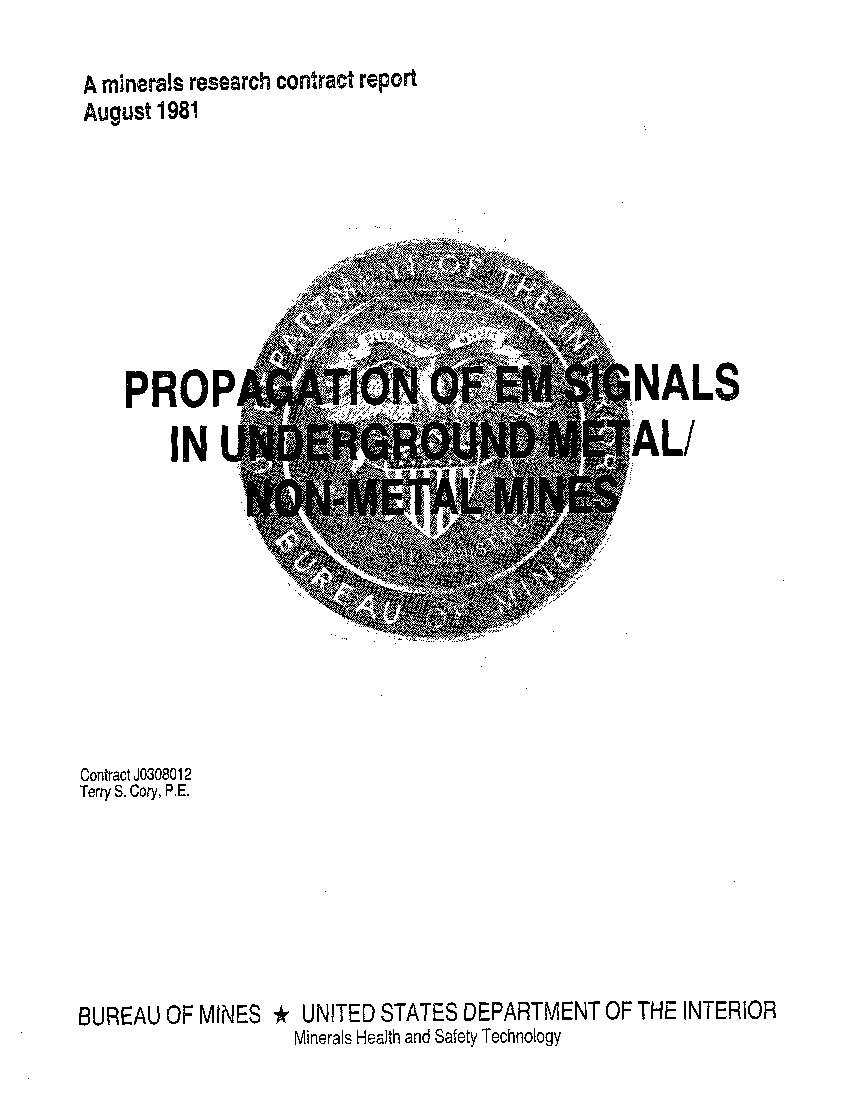Mining Publication: Propagation of EM Signals in Underground Metal/Non-Metal Mines
Original creation date: January 1981
This report describes the results of a measurement and analysis program to characterize wireless radio transmission in metal- nonmetal mines over a wide frequency range from 0.2 to 1,000 mhz and over a variety of mine environments. Six mines were chosen based on the relative economic significance of their product to the U.S. economy. Mine types include oil shale, uranium, potash, lead-zinc, copper, and silver. Particular mines were chosen to embody the most important mining techniques of the group. The results show that transmission at medium frequencies are optimum for wireless mine communications, agree with extensive testing previously performed in coal mines, and that mine-wide wireless systems are feasible with a minimum requirement for new dedicated wiring.
Authors: TS Cory, RJ Mahany
Contract/MOA Report - January 1981
NIOSHTIC2 Number: 10003022
U.S. Bureau of Mines Contract No. J0308012, NTIS No. PB/83-234666, 1981; :1-263
See Also
- Basic Tutorial on Wireless Communication and Electronic Tracking: Technology Overview
- The Implementation of UHF Radio Communications and CCTV Monitoring Systems in a Room and Pillar Metal/Non-metal Mine
- Metal and Nonmetal Industry Sector
- Mine Communications Engineering and Compatibility Guidelines
- Propagation of EM Signals in Underground Metal/Non-Metal Mines: Magma Copper Company - San Manuel Mine
- Propagation of EM Signals in Underground Mines
- Radio System Modifications for Improved Mine Safety (Medium Frequency)
- Technology News 501 - Measuring Very Low Air Velocities in Underground Metal/Nonmetal Mines
- Theory on the Propagation of UHF Radio Waves in Coal Mine Tunnels
- Ultra-Low Frequency Through-the-Earth Communication Technology
- Page last reviewed: 9/21/2012
- Page last updated: 9/21/2012
- Content source: National Institute for Occupational Safety and Health, Mining Program


 ShareCompartir
ShareCompartir
